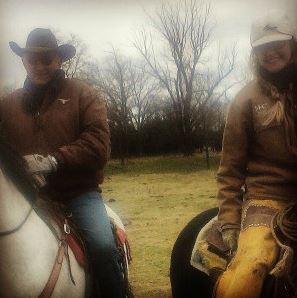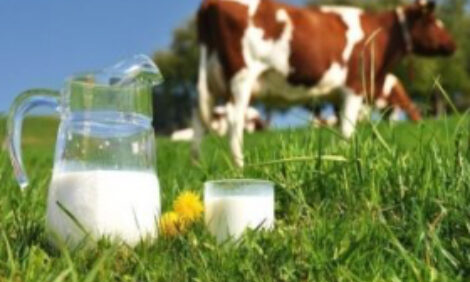



Why Beef Sustainability is So Hard
Given the plethora of challenges posing ranching, optimising operations in the interests of sustainability can be complex. However, most young producers have someone they can turn to.Whether its the weather or technology, changes and restrictions make cattle management decisions difficult, which is why it pays to pay attention, according to an Oklahoma agriculture student.

Kalyn McKibben grew up on a ranch before moving to Oklahoma State University where she currently resides. She admits that the ability to work a ranch does not come naturally, but is instead taught by people who know the business and have had to adapt and alter their practices before.
"Sustainability is a Big Deal"
Ranchers depend on natural resources to make a living, because in the end, that is what ranchers are: grass-salesmen, writes Kalyn.
However, Kalyn suggests that, in addition to the environmental side of sustainability, there is another much more personal aspect.
Being Shown the Ropes
The idea of sustainability is centered around the goal of making things better for the next generation; conserving natural resources, creating new, better management practices, preserving a culture, et cetera. As a fifth generation agriculture producer, it is sometimes assumed that I was born knowing the ropes- like I just hopped out of the womb knowing exactly how to manage cash inflows and outflows, when to plant certain feed crops and what to do when mama cows are having a hard time giving birth, writes Kalyn in her beef ambassador blog.
Even though I wasn’t born automatically knowing how to do everything that goes into running a ranch, I have had the opportunity to learn from the very best: my dad.
Here are a few things that I have found to make beef sustainability challenging:
*
"Even though I wasn’t born automatically knowing how to do everything that goes into running a ranch, I have had the opportunity to learn from the very best: my dad"
1. Times change
Things have a way of changing. Diet fads change, celebrity relationship statuses change, and fashion trends change (thank goodness!). Agriculture is no different. In 1960, one farmer fed 25 people. Today, one farmer feeds more than 150 people world-wide. Food production has had to change over the years to accommodate for an exponentially expanding population.
2. Demand changes
In 1998, the most requested Christmas gift was the Furby, a creepy little owl-like furry robot. In contrast, the most requested Christmas items of 2014 were personal technology gadgets, such as tablets, smart phones and laptops. It is safe to say that demand changes over time.
Over the years, demand for beef has changed also. Early twentieth century consumers preferred a higher-fat content beef. Today, consumers prefer a leaner beef. Each new generation seems to bring with it new ideas and things they find important. Beef producers have to follow the demands of consumers in order to survive. Demand causes supply.
3. Technology changes
The horse-driven plow used by my great, great grandfather has been replaced by progressive, precise production technologies. Staying on top of changing technologies is imperative to insure that ranchers and farmers are capable of meeting the ever-changing needs of societies.
4. Weather patterns change
Drought stricken summers, blizzard blasted winters, soupy, soggy springs and blustery falls. Every season, every year, every decade brings with it weather challenges that producers have to over come. If producers do not find ways to get through the hard times, producers are sometimes forced to sell out of the business.
5. Motivation changes
As with every profession, everything is not always roses and butterflies in beef production. There are hard times. Often, more hard times than great times. Producers are incredibly sensitive to externalities, unlike other businesses. Input prices can be high (and there are a lot of inputs!), markets can crash, weather can wipe out harvest and marketing plans, in addition to the tax exhausting hours can have in the home.
Despite passion, sometimes people get tired. Sometimes, people have a hard time getting back up after being knocked down countless times. Sometimes, people can no longer afford to do what they love to do. Ranchers are real people who face real, everyday challenges.


